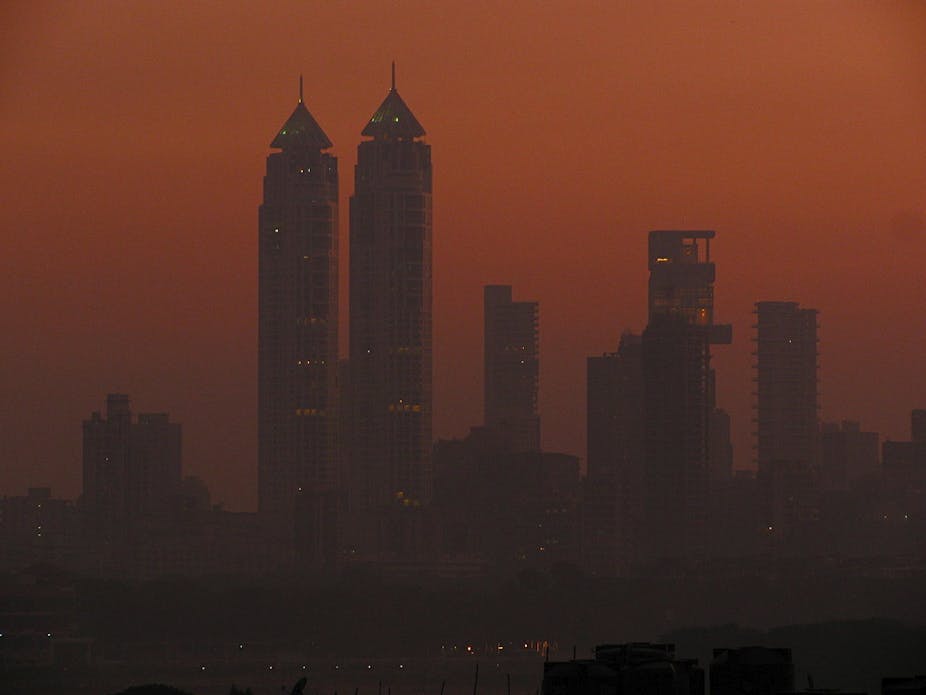The Indian economy grew by just 5% in the past year, the lowest rate in a decade. This represents a rare piece of bad news for a country that has experienced two decades of booming growth since radical reforms in 1991 dismantled the traditional economy.
These fast rates of economic growth had an appreciable effect on poverty in India. Over half the country’s rural population lived in poverty in 1993; by 2009, it was less than a third. The numbers these stats represent are huge: 50 million people were lifted out of poverty over the same period. In addition, the tax revenues accruing from the high rates of growth allowed the Indian government to finance highly ambitious and expensive social welfare policies for the poor such as employment guarantee programmes.
The decline in economic growth has already put strong pressure on Indian public finances, leading to serious concerns over the sustainability of these expensive programs. With a large number of the population still living below the $1.25 a day poverty line, it is debatable whether India can still maintain its progress in reducing poverty in the years ahead if the growth slowdown was to persist.
Just a cycle?
The Indian government clearly believes that this fall in economic growth is a temporary phenomenon. Montek Singh Ahluwalia, Deputy Chair of the Indian Planning Commission, has stated the growth rate will rebound to 7% next year.
However, there are reasons to believe that this slowdown in economic growth is not simply due to cyclical factors such as the recessionary conditions in Europe and the United States.
First, corporate fixed investment, which was the driver of India’s rapid economic growth in the 1990s and early 2000s, has shown signs of slackening off in the past year. This itself may be due to increasing uncertainty in investors’ minds regarding India’s growth prospects. A second and more important reason why India’s rapid economic growth is unlikely to continue is due to Indian politics, and the increasingly alarming rise of crony capitalism in the country.
Creative destruction
In the first phase of reforms in the 1990s, Indian policymakers concentrated on industrial deregulation, trade policy reforms and financial liberalisation. None of these reforms faced strong opposition from India’s politically influential groups such as the organised working class.
Freed from the shackles of the old order, new firms entered Indian markets, and a dynamic private sector took advantage. Economists, most notably Joseph Schumpeter, refer to this sort of economic growth, arising from the ashes of a previous order, as “creative destruction”.
In contrast to deregulation, anti-populist policies which the noted political scientist, Ashutosh Varshney, termed as “mass politics reforms” were very difficult to implement in India’s political environment.
The labour market is a good example, as it has proved particularly difficult to reform. Since the economic reforms of the early 90s created a more volatile macroeconomic environment, flexibility and speedy adjustment to market shocks are the keys to firms’ survival strategies, and India’s labour laws create a strong disincentive for firms in the organised sector to expand. India’s employment protection legislation is among the strictest in the world in terms of worker retrenchment.
With coalition governments dominating the Indian political landscape over the past two decades, labour market reform has been particularly controversial and difficult to implement. To a large extent, this slow pace of change can explain India’s weak performance in labour—intensive manufacturing exports.
The lack of economic reforms in the past five years, especially in the second term of the current government, has led to a perception among investors that Indian policymakers are not committed to growth in the medium to long-term.
Second wave
In the 2000s, India’s growth model shifted. Increasing importance was placed on a booming housing market and a mining sector that rode the wave of global commodity price increases. Rents earned through innovation - Schumpeterian rents - that came from dynamic manufacturing and information technology sectors became less crucial, replaced by rents from housing and primary commodity production. Recent research shows that a large proportion of the wealth of new billionaires has been generated in “rent-thick” sectors like mining and utilities as compared to productive sectors such as manufacturing.
In addition, a succession of high profile corruption scams hit the government, particularly in the award of contracts to the private sector in telecommunications and natural resource extraction. This sends a terrible message to potential investors, both foreign and domestic. The entire Indian political class must do a better job of assuring investors that they will be treated fairly and will able to operate in a stable environment.
Capitalism may have changed its character in the 2000s, and the more dynamic nature of Indian capitalism that was evident in the 1990s has been less apparent in the last decade or so.
In this, India may have become a victim of its own success. The booming 90s left the country with a complacent political class, too willing to chase easy profits in property and mining, without paying enough attention to productive investment or addressing corruption.
Unless India rediscovers its dynamism, the slowdown in economic growth is likely to persist for some time.

